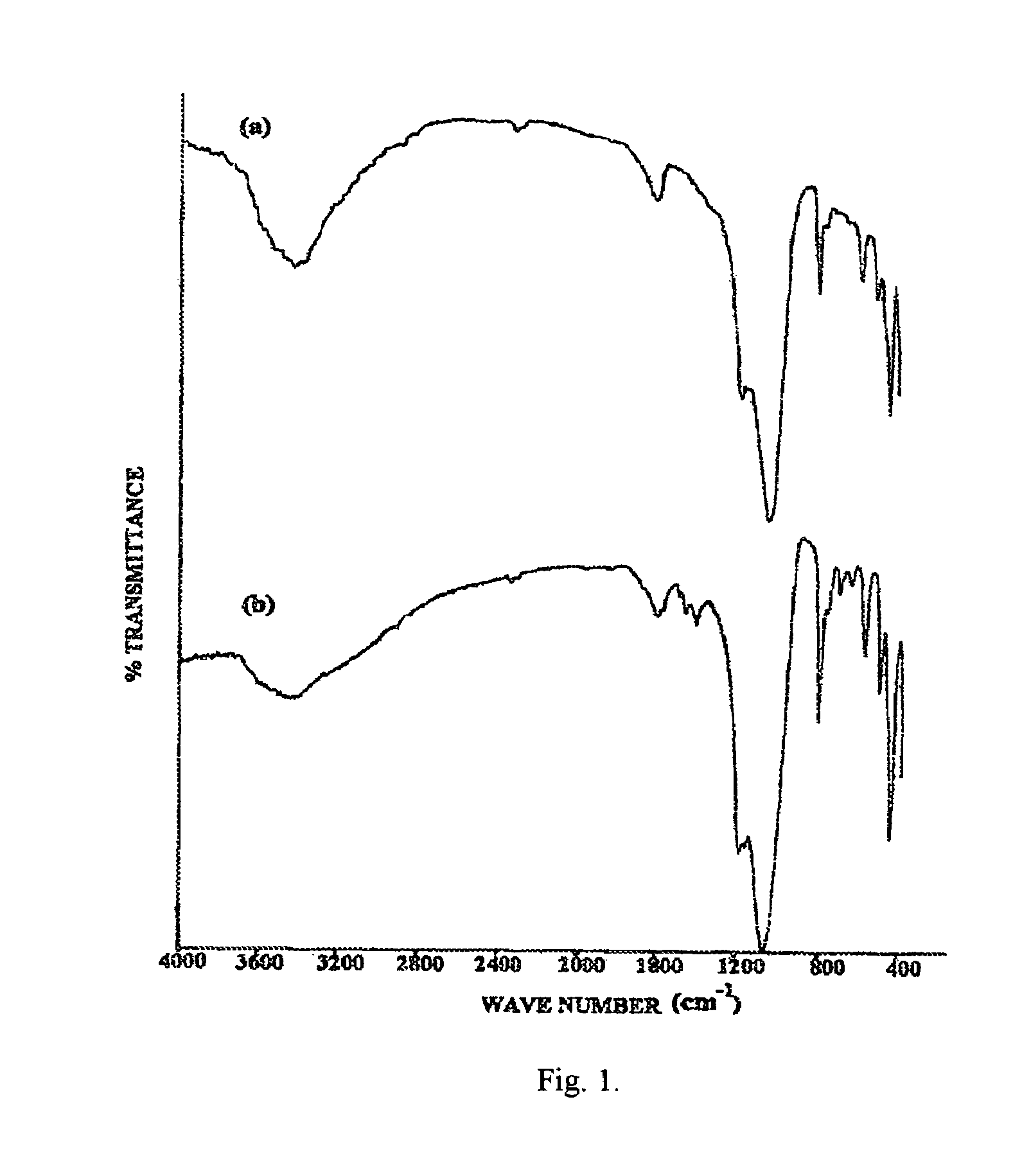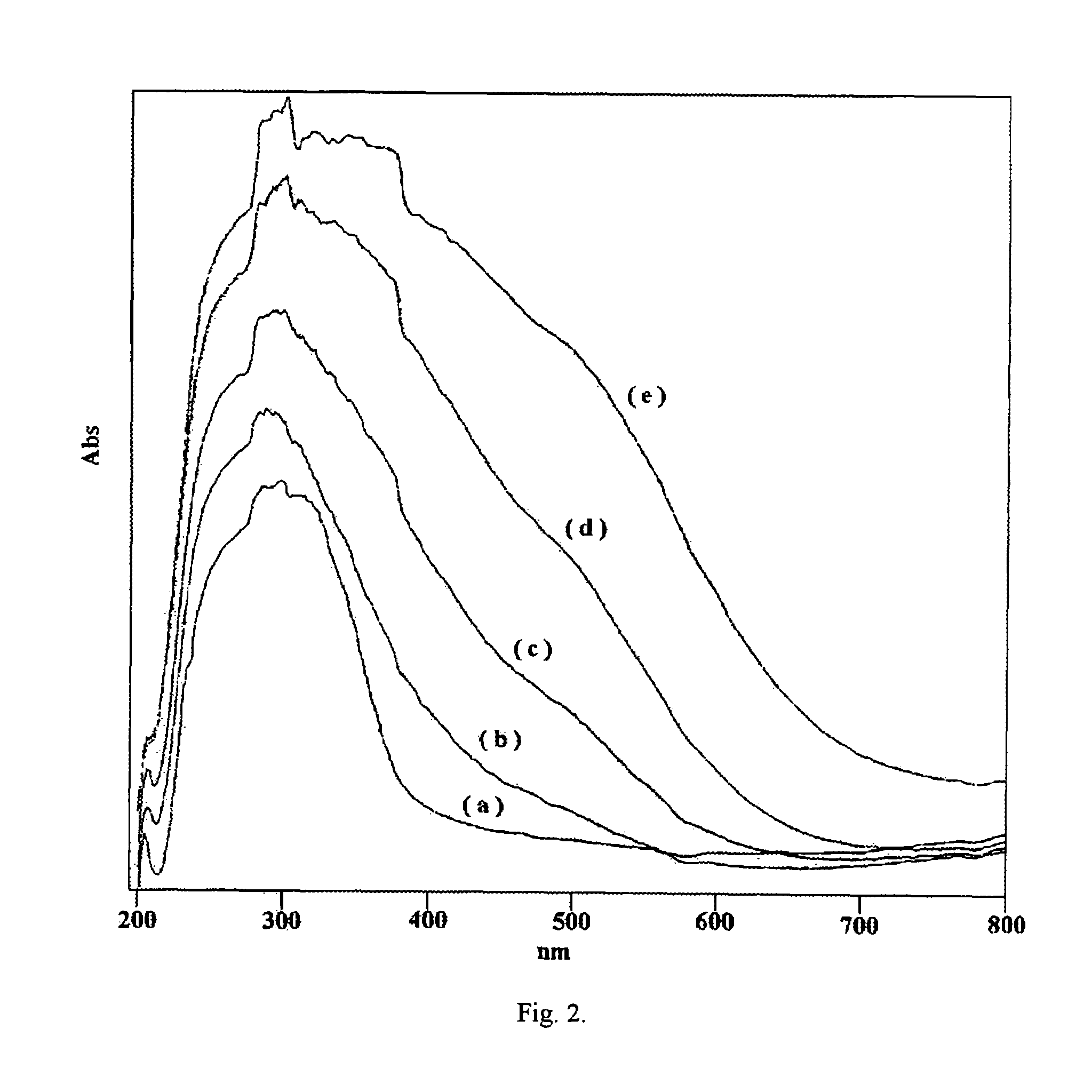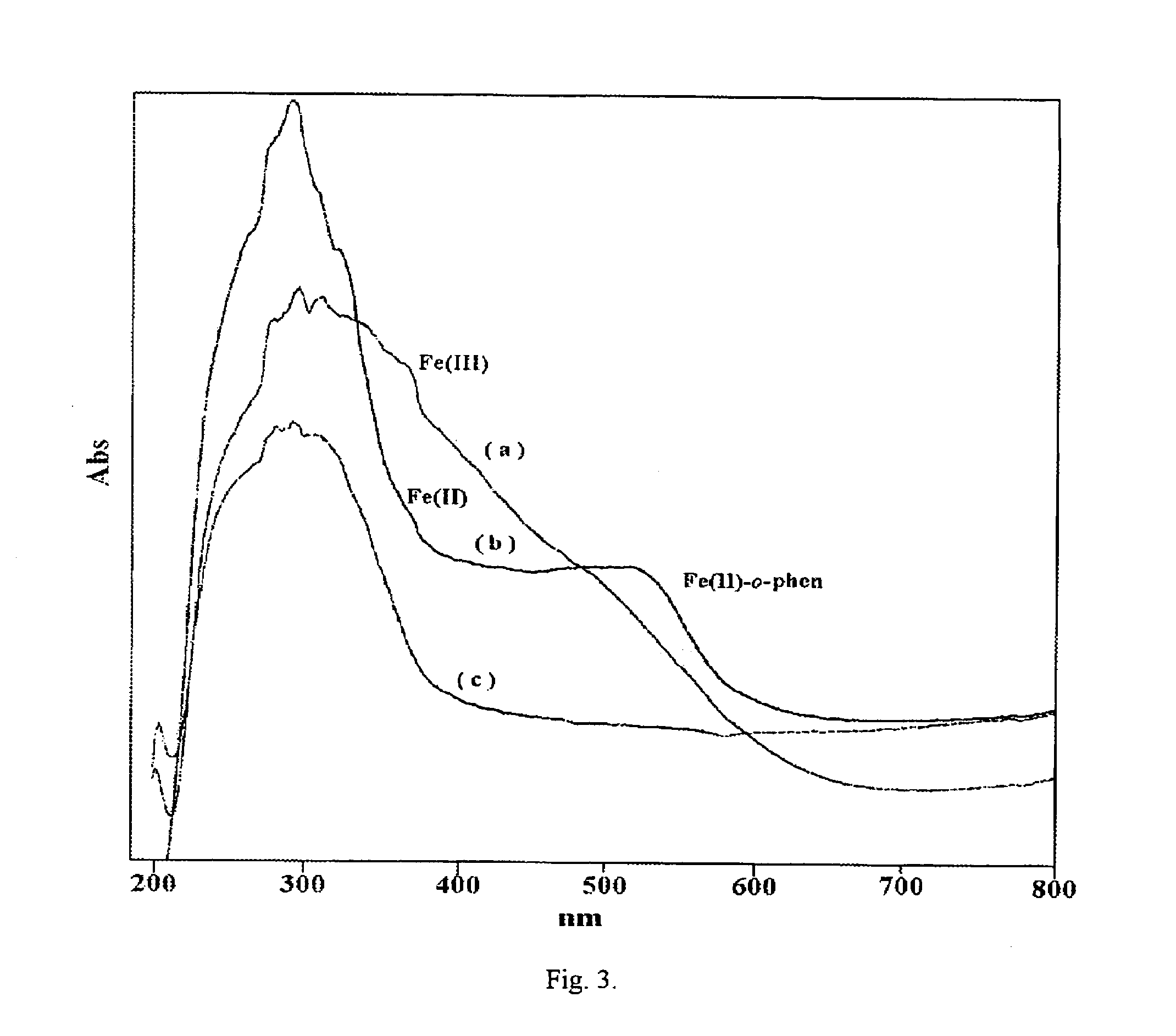Eco-friendly photo-fenton catalyst-immobilized Fe(III) over HY-zeolite
a zeolite and catalyst technology, applied in the field of eco-friendly photo-fenton catalysts, can solve the problems of difficult removal of sludge containing fe ions after treatment, high cost and ineffectiveness of the latter step, and mainly process limitations, and achieve the effect of low cos
- Summary
- Abstract
- Description
- Claims
- Application Information
AI Technical Summary
Benefits of technology
Problems solved by technology
Method used
Image
Examples
example 1
Effect of Fe(III) Loading on Zeolites were Studied
[0040]Table-2 shows the effect of Fe (III) loading on HY in photo-Fenton reaction. It was observed that 0.25 wt. % Fe(III)-HY shows higher efficiency than the catalysts with high loading of Fe. With increase in the iron content the activity does not increase. At low loadings, Fe-ions occupy the available cationic sites in the zeolite and above this concentration the excess Fe may form the Fe-clusters in the cavity and may block the pores openings and hinder the adsorption and entry of pollutant molecules. This clearly shows that one has to optimize the Fe content for the efficient photo-Fenton activity retaining the adsorption properties of the zeolite to enhance the rate of reaction.
[0041]
TABLE 2Effect of Fe(III) loading over HY on heterogeneous photo-Fentondegradation of phenol (10−4 M); H2O2 = 10−3 M; pH = 6PhenolTimeWt. % of Fe(III)-HY(min)5210.50.250.125−30100100100100100100077.287.397.28986.996.61051.753.850.13735.635.62039.534...
example 2
[0042]In order to check the role of effect of quenching methanol and *OH scavenger is added. In a photo-Fenton reaction on irradiation Fe(III) reduces to Fe(II) and these active species decompose the H2O2 to form the *OH radical, a reaction similar to a Fenton reaction, which is continuous even in the absence of light. If this radical reaction is not stopped after the sample collection the reaction is continuous even in the sample vial in presence of Fe (II) and H2O2. In order to arrest this radical reaction a *OH scavenger like methanol is added. Samples collected at regular intervals were quenched with methanol and for comparison another experiment was done without quenching and the results are shown in table-3. Without quenching the rate of reaction appears to be fast and 99% degradation is observed in 30 min. But the real rate of reaction is observed when the solution was quenched with methanol. So in all our experiments the samples were quenched before the analysis in order to ...
example 3
Tests were Performed on the Effect of pH
[0044]The influence of pH on phenol degradation on heterogeneous Fe(III)-HY / UV / H2O2 was and shown in table-4 The experiments were done at pH=3.0, 6 and 8.0 respectively and the pH was not adjusted during the process. The maximum degradation of phenol is observed within 60 min at pH=3. It was observed that at pH=6 initial rate was slow, and latter it followed the same pattern of pH=3. In case of pH=8, the rate of reaction was very slow and complete conversion of phenol was observed over a period of 3 h. In homogenous systems pH=3-4 is known to be the optimal value for phenol degradation by H2O2 / iron. As the degradation proceeds the formation of organic acids, lead to a drop of pH of the solution. In that case at pH=3, there will be no change in the pH of the solution during the reaction. In case of pH>3 there is decrease of pH during the reaction. At pH=8, precipitation of iron hydroxide and leads to an enhanced rate of H2O2 decomposition. Thus...
PUM
| Property | Measurement | Unit |
|---|---|---|
| wt % | aaaaa | aaaaa |
| wavelengths | aaaaa | aaaaa |
| weight | aaaaa | aaaaa |
Abstract
Description
Claims
Application Information
 Login to View More
Login to View More - R&D
- Intellectual Property
- Life Sciences
- Materials
- Tech Scout
- Unparalleled Data Quality
- Higher Quality Content
- 60% Fewer Hallucinations
Browse by: Latest US Patents, China's latest patents, Technical Efficacy Thesaurus, Application Domain, Technology Topic, Popular Technical Reports.
© 2025 PatSnap. All rights reserved.Legal|Privacy policy|Modern Slavery Act Transparency Statement|Sitemap|About US| Contact US: help@patsnap.com



